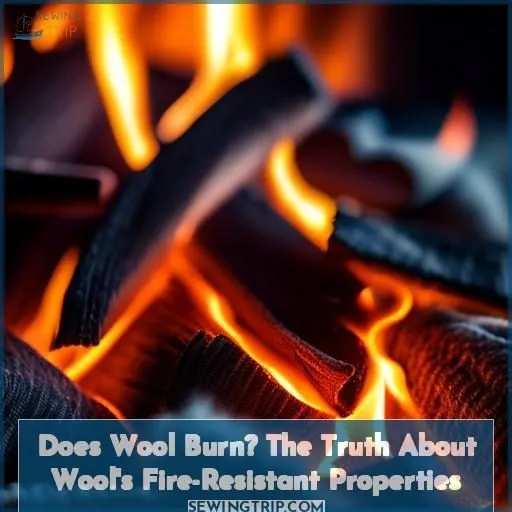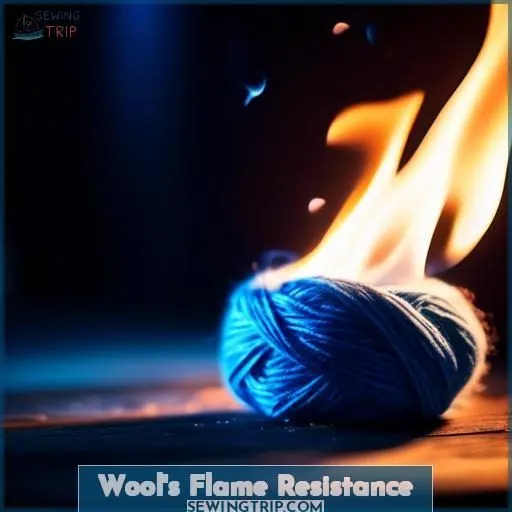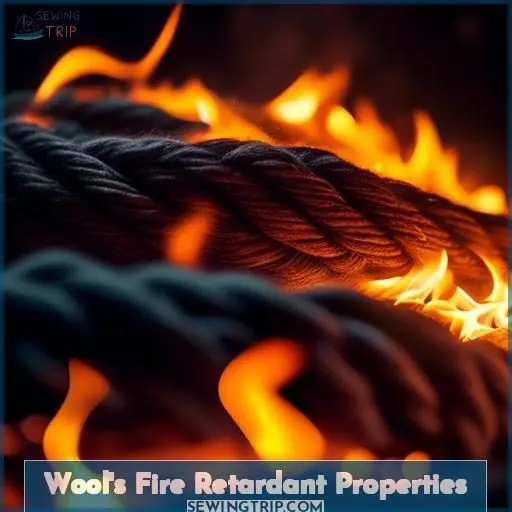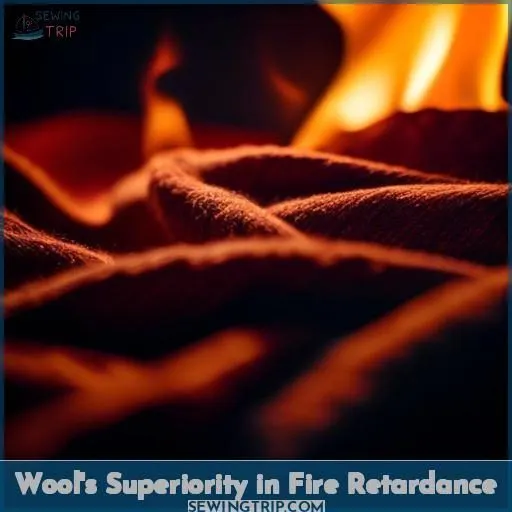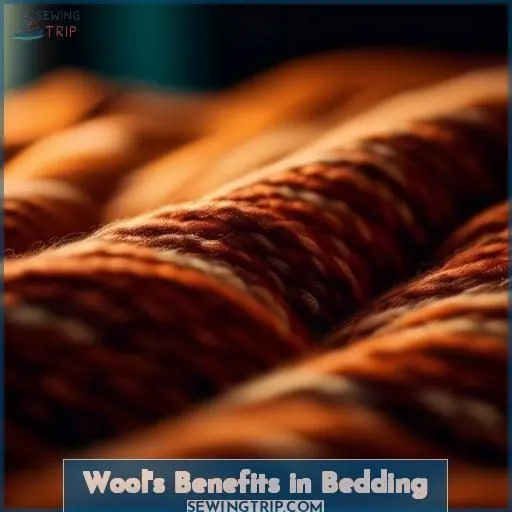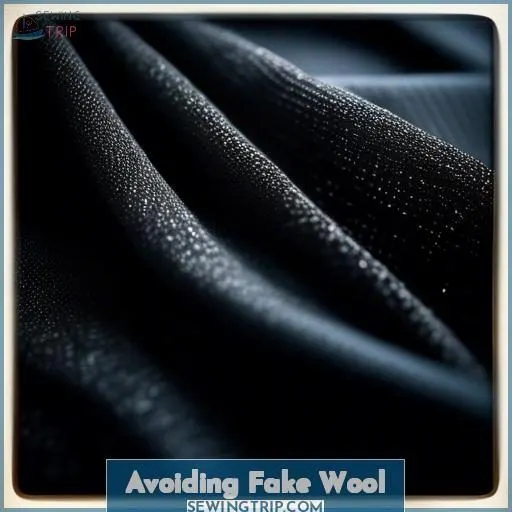This site is supported by our readers. We may earn a commission, at no cost to you, if you purchase through links.
You’ll be pleased to know that wool is naturally flame resistant and won’t readily ignite or burn. Instead, wool chars when exposed to high heat, making it an excellent choice for fire-prone environments.
Thanks to its high ignition temperature and self-extinguishing properties, wool reduces the risk of serious burns. Beyond just being flame resistant, wool also has inherent fire retardant qualities, making it a superior material for fire safety.
To confirm you obtain the genuine article, be certain to procure wool from reliable sources and inspect it thoroughly.
Table Of Contents
Key Takeaways
- Wool is naturally flame-resistant, charring instead of burning, which makes it difficult to ignite and allows it to self-extinguish quickly without melting or dripping.
- The high ignition temperature and inherent fire-retardant properties of wool make it a safe material for household items and bedding, reducing the risk of severe burns.
- Wool’s natural insulation and moisture-wicking capabilities contribute to a comfortable and restful sleep, while its breathability helps regulate body temperature.
- To ensure the safety and quality benefits of wool, it is essential to purchase from reputable sources, check for authentic labels, and conduct a combustion test if necessary.
Does Wool Burn?
Yes, wool burns.
However, it is naturally flame-resistant and offers a higher level of fire safety than other fibers.
When wool burns, it does not melt, drip, or stick to the skin.
Instead, it smolders and self-extinguishes when away from the flame.
This makes wool an ideal choice for interiors such as carpets, curtains, upholstery, and bedding, as it helps reduce the risk of fire spreading within a building.
Wool’s Flame Resistance
Wool is naturally flame resistant, making it a popular choice for household items and bedding. It chars instead of burning, making it difficult to ignite and self-extinguishes quickly. Unlike synthetic materials, wool doesn’t melt or drip, reducing the risk of severe burns in household fires.
Wool’s high ignition temperature and requirement for high oxygen levels to burn make it a safer choice for those concerned about fire safety. Its lack of chemical treatment also adds to its appeal for those seeking a natural, non-toxic option for sleep safety.
Wool’s Fire Retardant Properties
Shifting gears from wool’s impressive resistance to catching fire, let’s focus on its fire retardant qualities. Wool’s self-extinguishing fabric commands the spark to cease, effectively. Its heat resistance is like an intrinsic firefighter, guaranteeing your tranquility.
Imagine this: your comfortable wool throw is a household safety hero, due to its inherent flame retardant properties. If a wayward spark dares to test it, you can cuddle up, confident in the knowledge that you’re enveloped in secure, natural protection against the heat of the moment.
Wool’s Superiority in Fire Retardance
Wool is a superior choice for fire resistance. It doesn’t melt or drip, instead it chars and self-extinguishes. This non-toxic fabric doesn’t produce toxic gases when it burns, ensuring safety for all family members.
Wool’s durability and long-lasting nature make it a safe option for bedding and other household items. Plus, it’s environmentally friendly and doesn’t require chemical treatments.
Hence, when considering fire retardance, wool is the victor.
Wool’s Benefits in Bedding
Did you know that wool’s natural insulation and moisture-wicking properties make it an excellent choice for bedding? Wool’s breathability also helps regulate body temperature, promoting a more restful and comfortable sleep.
Discussion Point(s)
Wool’s flammability is often misunderstood. It doesn’t burn like other fabrics; instead, it chars and self-extinguishes. This fire resistance makes wool superior to synthetic materials.
In bedding, wool’s benefits include a safe sleeping environment, protection against fire hazards, natural insulation, and moisture regulation. These features contribute to a restful and comfortable sleep.
Wool’s superiority in fire retardance is a key reason why it’s often used in furniture and curtains.
moisture wicking
As you snuggle into your wool bedding, you’ll find it’s not just a cozy fortress against the night’s chill. Wool’s moisture-wicking prowess works tirelessly, drawing perspiration away from your skin. Through evaporation, it guarantees a dry and comfortable slumber, without the clamminess that can turn a dreamy night into a damp squib.
and breathability
Wool’s breathability is another key factor in its benefits for bedding. It allows for air circulation, keeping you cool in the summer and warm in the winter.
This natural insulation property makes wool a sustainable and cost-effective choice for bedding.
Additionally, wool’s durability guarantees that your bedding will last for years, providing a comfortable and safe sleeping environment.
Its versatility in various bedding products, from wool cloth diaper covers to adult clothing, makes it a popular choice for those seeking comfort and safety.
Avoiding Fake Wool
As for wool, you desire to guarantee you’re acquiring the authentic substance. Here’s how to steer clear of counterfeit wool and guarantee you’re obtaining a legitimate, superior product:
- Procure from reliable sources: Seek out brands that concentrate on wool products and possess a record of quality and integrity.
- Inspect for labels or brand markings: Authentic wool products will frequently have labels or brand markings denoting their wool content.
- Scrutinize items thoroughly: Imitation wool may lack the identical texture, sensation, or aspect as authentic wool.
- Perform a wool combustion test: A simple combustion test on an inoperative area can assist you in determining whether the wool is genuine or not.
Frequently Asked Questions (FAQs)
How does wool compare to silk in flammability?
Well, my friend, in terms of flammability, wool is a real diamond in the rough! Unlike silk, which ignites rapidly like a burning building, wool is an exceptional flame-retardant champion, smoldering rather than bursting into flames.
Can wool be made more flame resistant?
Wool is naturally flame-resistant, but you can boost its fire-fighting powers even further. Just give it a special chemical treatment – now it’s a real firecracker deterrent!
What happens to wools flame resistance over time?
Wool’s flame resistance won’t diminish over time. Its natural properties keep it fire-resistant wash after wash. So you can trust your woolen garments will keep you safe and snug, year after year.
Are there any health risks from burning wool?
You don’t have to worry – burning wool doesn’t release toxic fumes or cause health risks. It’s an all-natural fiber that chars slowly, making it a safe choice for home furnishings and clothing. Ditch those synthetic fabrics and go au naturel with wool!
How does humidity affect wools flammability?
Higher humidity makes wool’s fire resistance skyrocket. As the air gets damper, those cozy fibers become warriors against any spark’s fate – smothering flames before they can ignite your life’s treasures. Stay snug and secure with wool’s moisture-fueled might.
Conclusion
When the rubber meets the road, wool’s unparalleled fire-resistant qualities make it a clear winner. You can rest easy knowing wool doesn’t readily burn, reducing burn risks. Its superior moisture-wicking and breathability further enhance wool’s appeal for safe, comfortable bedding. Discerning consumers prioritize genuine wool from trustworthy sources to leverage its certified flame-retardant properties fully.

